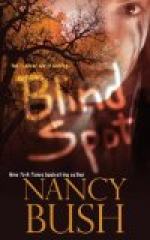Who wrote the story? When I first looked into the question, as a 15 year old boy, Homer Eon Flint (he originally spelled his name with a “d”) was already dead of a fall into a canyon. In 1949 his widow told me: “I think Homer’s father contributed that middle name”—the same name (with slightly different spelling) that the Irish poet George Russell took as his pen-name, which became known by its abbreviation AE. Mrs. Flindt said of Flint’s father: “He was a very deep thinker, and enjoyed reading heavy material.” Like father, like son. “Homer always talked over his ideas with me, and although I couldn’t always follow his thoughts it seemed to help him to express them to another—it made some things come more clearly to him.”
Flint was a great admirer of H. G. Wells (this little grandmother-schoolteacher told me) and had probably read all his works up to the time when he (Flint) died in 1924. He had read Doyle and Haggard, but: “Wells was his favourite—the real thinker.”
Flint found a fellow-thinker in Austin Hall, whom he met in San Jose, California, while working at a shop where shoes were repaired electrically—“a rather new concept at the time.” Hall, learning that Flint lived in the same city, sought him out, and they became fast friends. Each stimulated the other. As Hall told me twenty years ago of the origin of the blind spot:
“One day after we had lunched together, I held my finger up in front of one of my eyes and said: ’Homer, couldn’t a story be written about that blind spot in the eye?’ Not much was said about it at the time, but four days later, again at lunch, I outlined the whole story to him. I wrote the first eighteen chapters; Homer took up the tale as ‘Hobart Fenton’ and wrote the chapters about the house of miracles, the living death, the rousing of Aradna’s mind, and so forth, up to ‘The Man from Space,’ where once again I took over.”
To the blind spot Hall contributed a great knowledge of history and anthropology, while Flint’s fortes were physics and medicine. Both had a great fund of philosophy at their command.
When I met Hall (about four years older than Flint) he was in his fifties: a devil-may-care old codger (old to a fifteen-year-old, that is) full of good humour and indulgence for a youthful admirer who had journeyed far to meet him. He casually referred to his 600 published stories, and I carried away the impression of one who resembled both in output and in looks that other fiction-factory of the time, Edgar Wallace.
Finally: Several years ago, before I knew anything about the present volume, I had an unusual experience. (At that time I had no reason to think the blind spot would ever become available as a book, for the location of the heirs proved a Herculean task by itself; publishers had long wanted to present this amazing novel but could not do so until I located Mrs. Mae Hall and Mrs. Mabel Flindt.) While, unfortunately, I did not take careful notes at the time, the gist of the occurrence was this:




